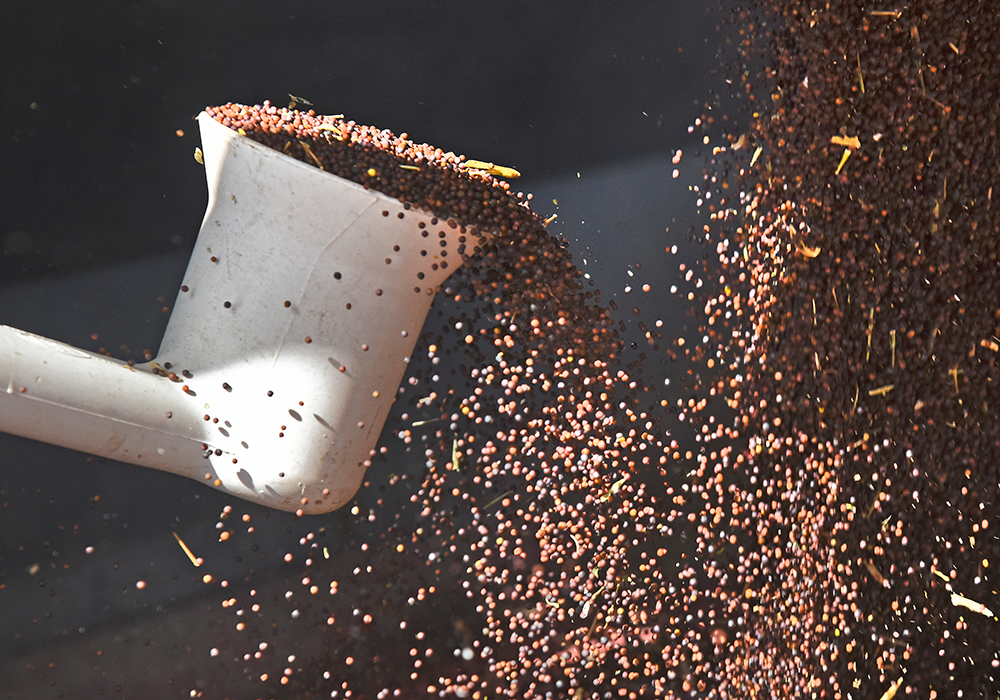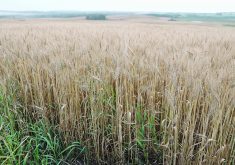Individual premiums will be in place for 2023, based on claim history compared to a base premium in a risk zone
Saskatchewan farmers who take part in crop insurance will have record high coverage this year at an average $446 per acre.
Agriculture minister David Marit announced the 2023 program details Feb. 27.
Higher commodity prices and yield coverage pushed the average coverage from $405 last year, and, with higher insured prices, moved the average total premium up to $14.79 per acre, compared to $12.05 in 2022.
Insured prices are up about 7.2 percent year-over-year, said Saskatchewan Crop Insurance Corp. acting chief executive officer Jeff Morrow.
Examples include hard red spring wheat at $10.21 per bushel compared to $8.71 last year, canola up from $17.01 per bu. to $18.83, and large green lentils up four cents to 40 cents per pound.
Read Also

Pakistan reopens its doors to Canadian canola
Pakistan reopens its doors to Canadian canola after a three-year hiatus.
Coverage overall is up 10.1 percent and premiums are up 22.73 percent.
Grain farmers already knew they would be switching to individual premiums as SCIC announced that change last fall and has since been meeting with producer organizations.
The corporation previously said modelling showed most customers would see decreases in premiums-per-acre and that any increases would be capped at $5 per acre.
Marit said because of a one-year lag, the 2023 premiums are affected by the 2021 drought and resulting lack of production.
“There was a large number of claims in 2021,” he said. “However, we see less of an impact on 2023 premium rates due to advances in our industry and modern farming practices. Saskatchewan producers are always innovating to become more productive and sustainable.”
Marit said new technologies allow producers to better mitigate risk and be more resilient.
Claims in 2021 totalled $2.5 billion. Final 2022 numbers haven’t yet been determined but Morrow said claims would be “north of $1 billion.”
Most of those claims were in the west-central and southwest areas, where drought persisted, he said.
Last year, producers insured more than 35.6 million acres through SCIC, which is more than 80 percent of total seeded acres.
Marit encouraged all producers to make sure they were covered for 2023.
The individual premiums are based on claim history compared to a base premium in a risk zone. The premiums are calculated upward or downward from the base for each insured crop. A claim on one crop doesn’t affect the others.
Another change for 2023 is an enhancement to the coverage levels for the unseeded acreage benefit. The minimum remains at $50 per acre, but additional coverage is available at $75 per acre, $100 per acre and $125 per acre in cases where it is too wet to seed.
Marit said often the eastern side of the province is more affected by wet spring conditions.
“Manitoba had raised theirs, so that’s why we just felt compelled to work through that,” said Marit.
There were no changes to the weather-based programs such as forage rainfall insurance.
Morrow said a change made last year to that program resulted in payments. Then, because of the 2021 heat dome, SCIC changed the parameters so that for every day of temperatures of more than 31 C at a particular weather station, one millimetre of rainfall was subtracted from the calculation. This was to reflect that when it’s that hot, the forage doesn’t have access to all the rain that falls.
Marit said there is concern that western Saskatchewan will lack moisture again this year but that could change.
He said the forage rainfall program has paid out $94 million in the last two years.
“Specifically, due to the widespread drought in 2021, the forage rainfall program paid producers approximately 48 percent of selected coverage,” he said.
Morrow said participation has grown. In 2021, producers insured 3.1 million acres and last year that rose to four million.
He noted that the highest coverage this year for tame hay is $121 per acre.
Farmers were also reminded that coverage under AgriStability is rising to 80 percent from 70 this year. Combined with the removal of the reference margin limit, the program is expected to be more responsive to margin drops for all producers, including those who raise cattle.
The last date to buy calf price insurance through the Livestock Price Insurance program is June 8, while policies for other classes of cattle and hogs are available year-round.
Saskatchewan Association of Rural Municipalities president Ray Orb, on hand for the announcement, said producers face a lot of risk and high input prices.
“I think the protection and the ongoing commitment is there,” he said of the 2023 program.
He said all producers benefit from the wildlife damage compensation program.
“We’re having a lot of reports about deer and elk being in haystacks right now, as well as being out in some of the fields.”
All producers, regardless of participation in crop insurance, can make wildlife damage claims.
















